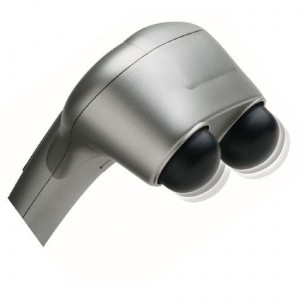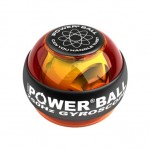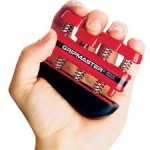Guest Post by James J of http://www.howiovercamersi.co.uk
** Post updated with additional material at end on 16 May 2011 **
Trigger Points and RSI
 I’m delighted to be given space to say a few things about RSI and trigger points. I battled with RSI for several years before finally overcoming it several months ago and I now have a very small website that details my journey back to full health. What helped me was discovering that trigger points (a.k.a. muscle knots) can be a significant cause for repetitive strain injury. Alan has already posted on the essentials of what I found in an earlier post titled “Does forearm extensor trigger point massage offer a potential cure for RSI?” He talks about an excellent book by Clair Davies and how trigger points can cause referred pain elsewhere. I will try not to be repetitive and just highlight a few points that I would make in addition to Alan’s post.
I’m delighted to be given space to say a few things about RSI and trigger points. I battled with RSI for several years before finally overcoming it several months ago and I now have a very small website that details my journey back to full health. What helped me was discovering that trigger points (a.k.a. muscle knots) can be a significant cause for repetitive strain injury. Alan has already posted on the essentials of what I found in an earlier post titled “Does forearm extensor trigger point massage offer a potential cure for RSI?” He talks about an excellent book by Clair Davies and how trigger points can cause referred pain elsewhere. I will try not to be repetitive and just highlight a few points that I would make in addition to Alan’s post.
Trigger Points Refer Pain Elsewhere
What this means is that the pain you feel is not necessarily at the site of the actual problem. Normally, injured tissue is painful at the site where the damage occurs — if I cut myself with a knife, the pain is located at the very site where the skin is pierced. However, with trigger points, we feel pain in places where there is no problem at all. What seems to happen is that the brain gets confused about where the pain stimulus is coming from and we end up feeling pain some distance away from the real source of the problem. In other words, the trigger point (or muscle knots) refers pain to another location. The site of the trigger point itself is often not particularly painful.
This is very important to realise because the danger is that you will end up pointlessly rubbing away or massaging muscles to no avail. For example, I had searing pain along the outside of my forearm (i.e. the upper side) but this was actually caused by a trigger point on the inside forearm (i.e. palm side or inside forearm) near the crease of the elbow. If I massaged the top of my forearm where it hurt, it did nothing to resolve the problem. Not until I started to massage the underside (palm side) of my forearm at a specific spot near the crease of the elbow did the forearm pain go away. If you have the book by Clair Davies, this is described on p116 with the accompanying diagram figure 6.9.
I mention this because I recently had a conversation with a work colleague about trigger points and RSI. He was getting pain in his arms. He was very interested in my success with massage. Unfortunately, I forgot to explain to him about referred pain and he thought you had to simply massage the spots where you feel pain. Thankfully, I later managed to explain to him how trigger points refer pain elsewhere and he’s now purchased a book which is hopefully setting him right.
Another example is that I had a very sharp pain in the front of my right shoulder. I used to rub away at this place because it was so painful. Unbeknownst to me, there was nothing wrong with my shoulder. The real pain came from a trigger point in the infraspinatus which is a muscle round the back over the shoulder blade. Only by treating a trigger point some distance away from the pain did this help. In Davies’ book, this is on pp90-91.
Trigger Points Weaken Muscles
If you have been suffering from trigger points for a long time, the affected muscles can weaken. In the words of my physiotherapist, they “shorten”. So, getting rid of a trigger point (by deep massage) may not be enough. You may also have to rebuild weakened or shortened muscles with targeted exercises. Having suffered from RSI in my forearm for several years, my muscles had become quite weak. I found it difficult to hold an umbrella or a mobile telephone to my ear. Even after the trigger point had been “deactivated” (to use the proper term), I still needed to rebuild strength in my shortened muscles. My physiotherapist told me to use very small weights of 1 kg max and gently hold them in the way I might hold a microphone. I would then gradually rotate my hand and bend my wrists to slowly rebuild the muscles. It’s important not to use weights that are too heavy because the point about computer usage (and other RSI-inducing activities) is that they are “low load” work. You need to rehabilitate the muscle’s ability to cope with low load endurance. By the way, my physiotherapist said that a tin of baked beans serves as a very good alternative to a hand weight! Another alternative is a Powerball which if you spin SLOWLY, can achieve the same effect. I actually used the Powerball more than small weights but I tend not to recommend it so much because there is a danger that users will spin it too quickly and therefore not achieve the “low load” effect.
Massage Immediately after a Session on the Computer
I found it was quite useful to do massage after working on the computer for a short time (say 5 mins). In other words, I deliberately waited until the RSI symptoms had arrived before doing the massage. Typically, I would spend about 5 min on a computer whereupon my arms and shoulder would start to hurt a lot. I would then do the massage because it’s easier to find where the trigger point is when my muscles were raging with pain!
Other Good Books
I recommend The Trigger Point Therapy Workbook by Clair Davies but there are other very good books too. I really like Simeon Niel-Asher’s Concise Book of Trigger Points which has very good colour drawings but I found that it doesn’t contain quite as much detailed information as Davis’ work. Also, some of the trigger points I suffer from are not mentioned, although to be fair, it is a “concise” book. There is also a useful book by Donna and Steven Finando called Trigger Point Therapy for Myofascial Pain. It is not especially well presented but has some useful information that can serve as a supplementary details. It’s not as good as Davies or Niel-Asher but it is certainly an interesting resource.
Okay, well that’s all I would add to the previous post. You can find out more on my website How I Overcame RSI. Don’t hesitate to e-mail james@howiovercamersi.co.uk if you have any questions.
James J
Additional Information 16/05/11 (from James J)
One thing I would note is that I don’t think the book by Davies’ covers all of the possible trigger points ( and nor do the books by Niel-Asher or Finando). I am convinced that I found some other trigger points causing pain along the topside (outer side) of my forearm; these points are not mentioned in those books so I may be wrong but I am personally 100% convinced that I had trigger points at those spots. Until I started massaging those spots, I didn’t get much better.
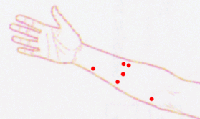 Have a look at the image on the right. you will see that all of additional spots that I found are on the inside part of the forearm. Whenever I pressed them, they would have the characteristic pain of a trigger point i.e. they were exquisitely painful. Quite often, they referred pain elsewhere, although not necessarily to the outside of the forearm. You might want to give it a go. One of the spots, to be fair, is mentioned on page 116 of the book by Davies. It is figure 6.9 for the Brachioradialis. However, the pain pattern shows that only part of the outside forearm is shaded. I think that more of the forearm should be shaded – at least that was my experience. Of particular importance were the parts in the middle region of my inner forearm – see the four red dots placed together.
Have a look at the image on the right. you will see that all of additional spots that I found are on the inside part of the forearm. Whenever I pressed them, they would have the characteristic pain of a trigger point i.e. they were exquisitely painful. Quite often, they referred pain elsewhere, although not necessarily to the outside of the forearm. You might want to give it a go. One of the spots, to be fair, is mentioned on page 116 of the book by Davies. It is figure 6.9 for the Brachioradialis. However, the pain pattern shows that only part of the outside forearm is shaded. I think that more of the forearm should be shaded – at least that was my experience. Of particular importance were the parts in the middle region of my inner forearm – see the four red dots placed together.
James J
Rate this post! [ratings]
Have a look at the attachment I have sent to this e-mail. you will see that all of additional spots that I found are on the inside part of the forearm. Whenever I prsssed them, they would have the characteristic pain of a trigger point i.e. they were exquisitely painful. Quite often, they referred pain elsewhere, although not necessarily to the outside of the forearm. You might want to give it a go. One of the spots, to be fair, is mentioned on page 116 of the book by Davies. It is figure 6.9 for the brachioradialis. However, the pain pattern shows that only part of the outside forearm is shaded. I think that more of the forearm should be shaded – at least that was my experience. Of particular importance were the parts in the middle region of my inner forearm – see the four red dots placed together.
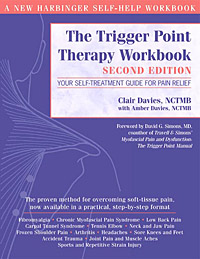
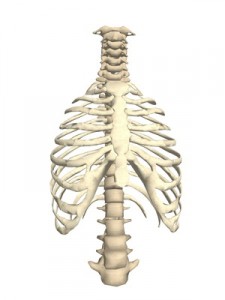 For the past 14 months (it seems like a whole lot longer!) I have had another overuse injury/health issue going on. The condition is called
For the past 14 months (it seems like a whole lot longer!) I have had another overuse injury/health issue going on. The condition is called 

